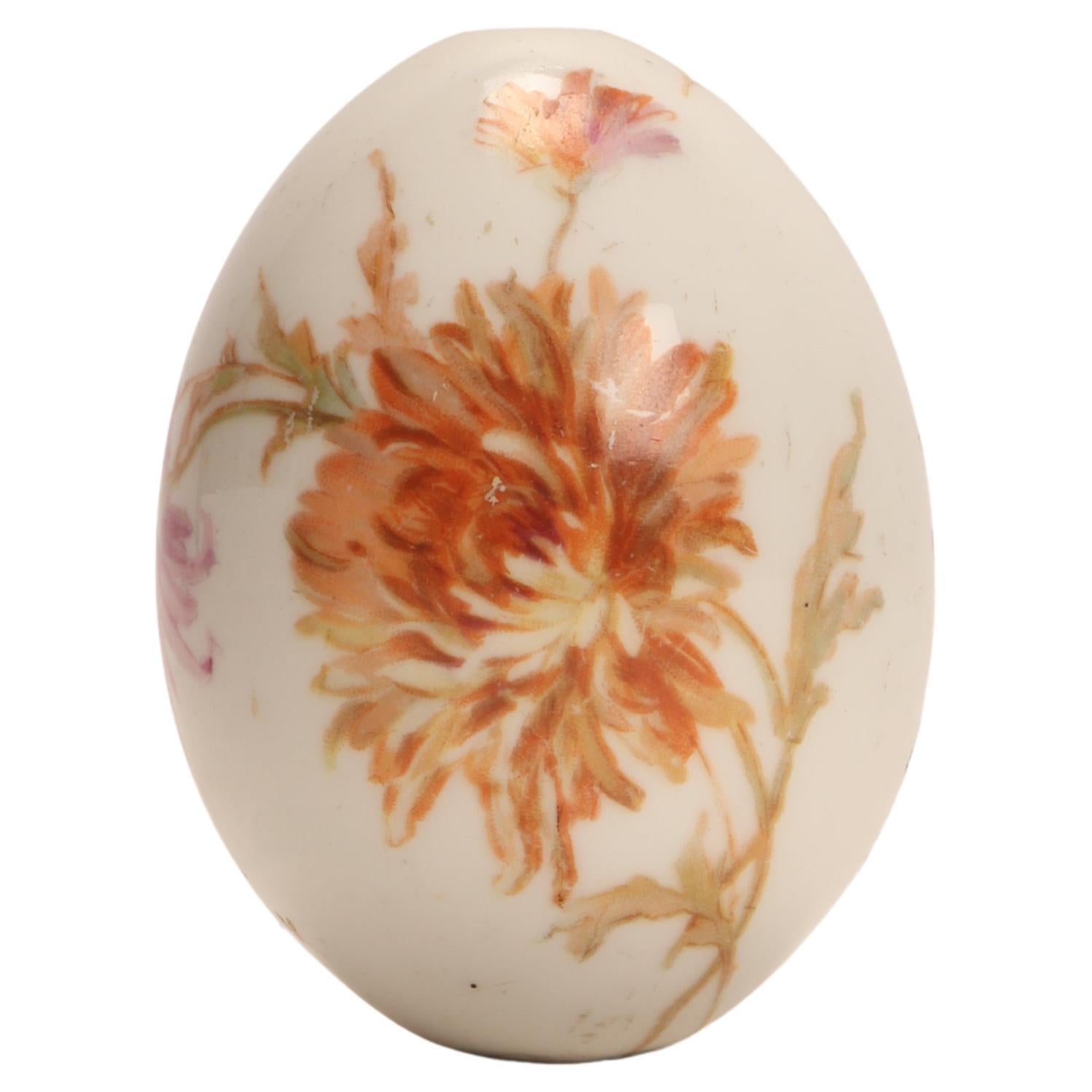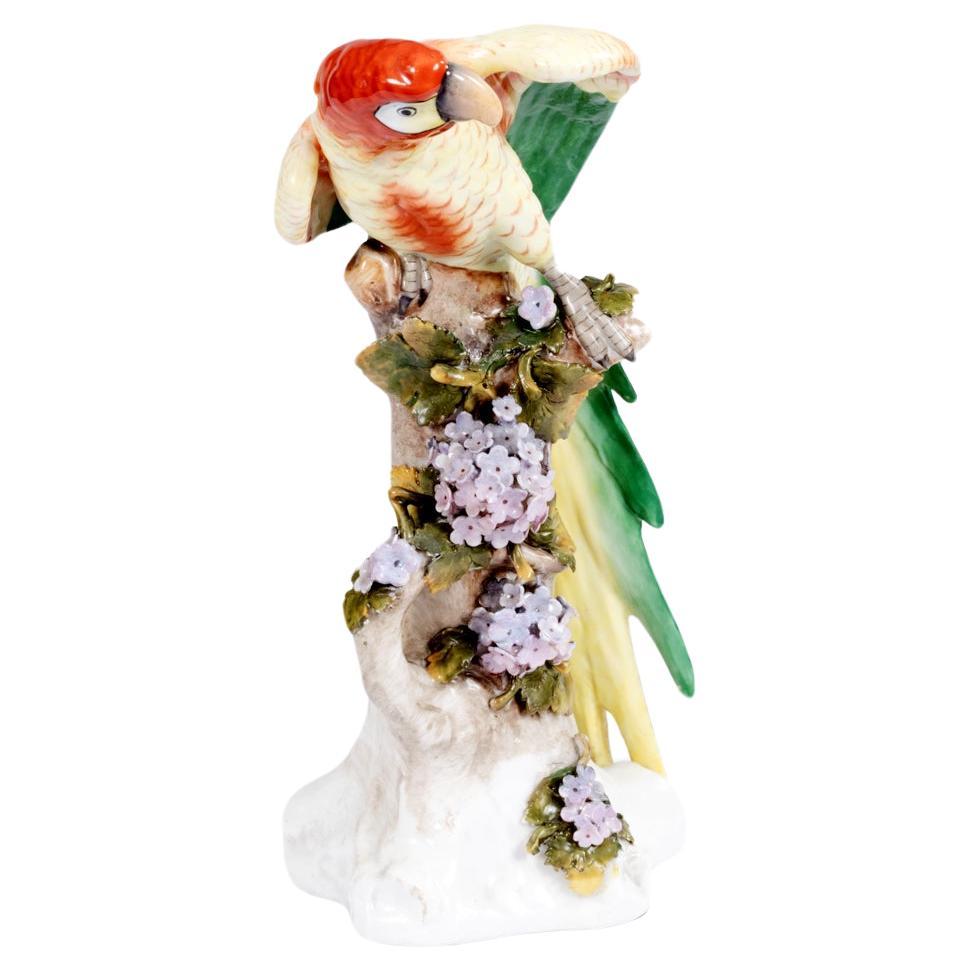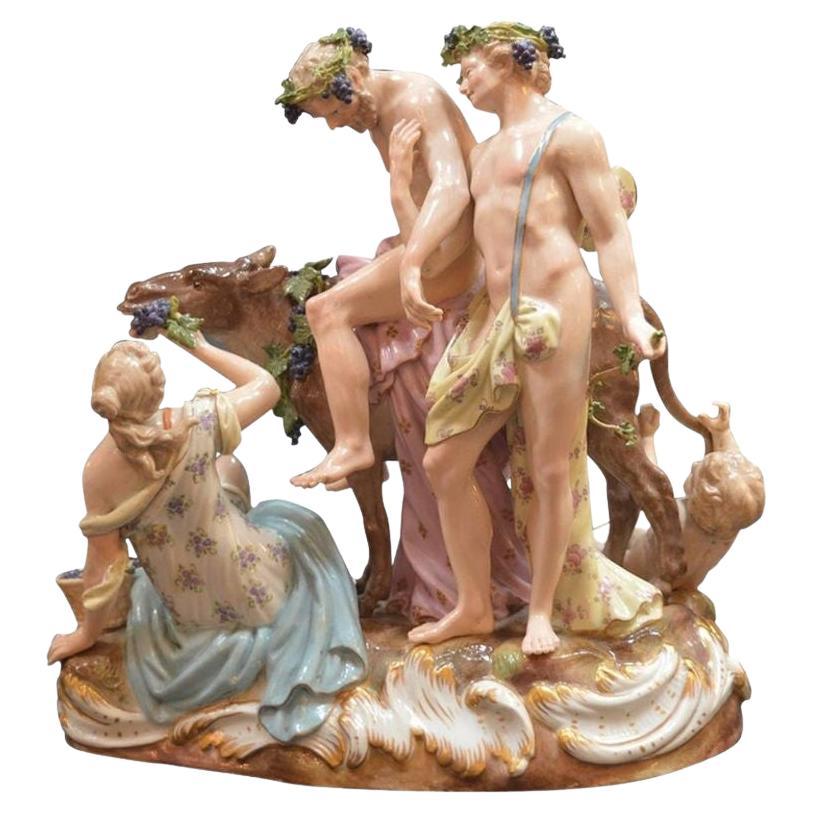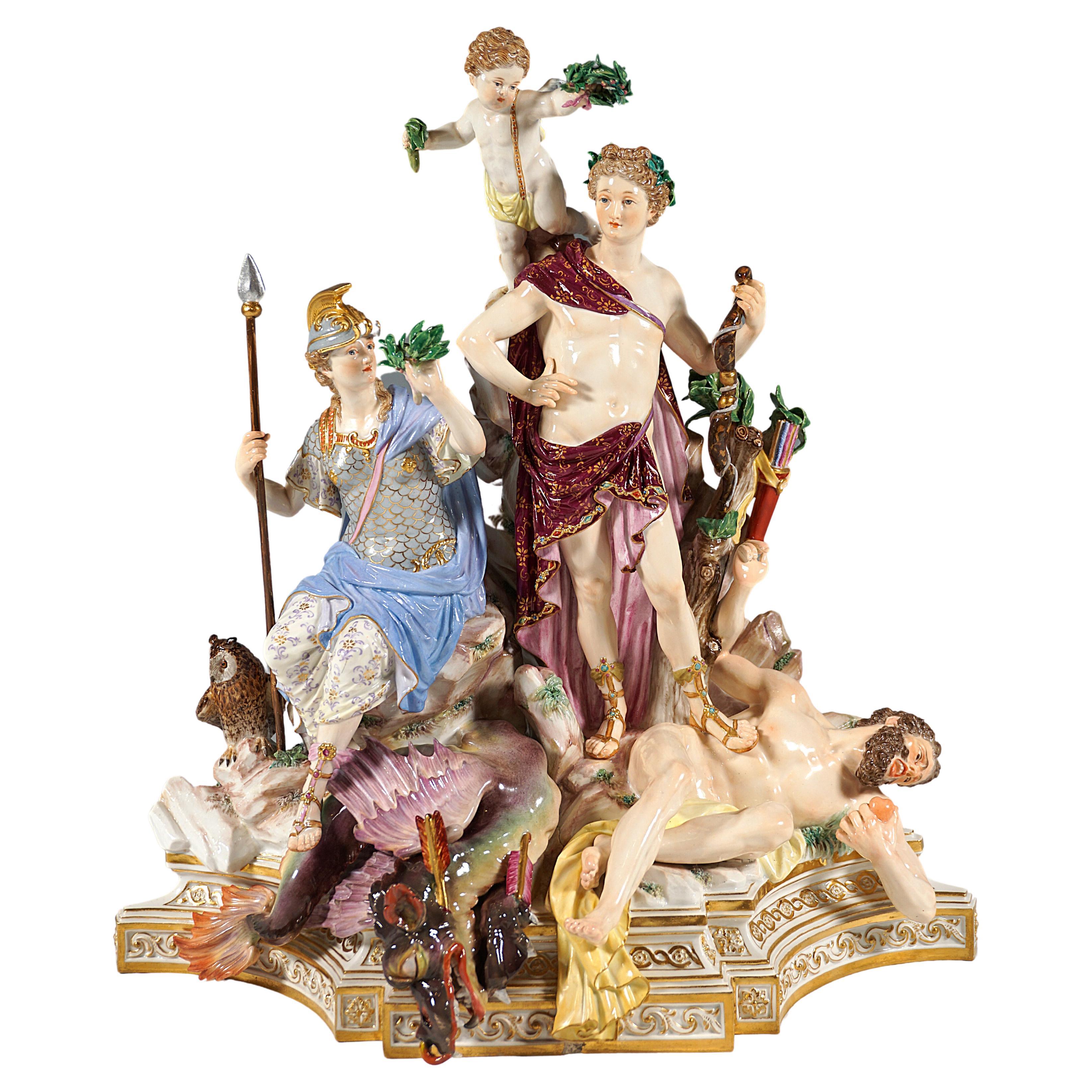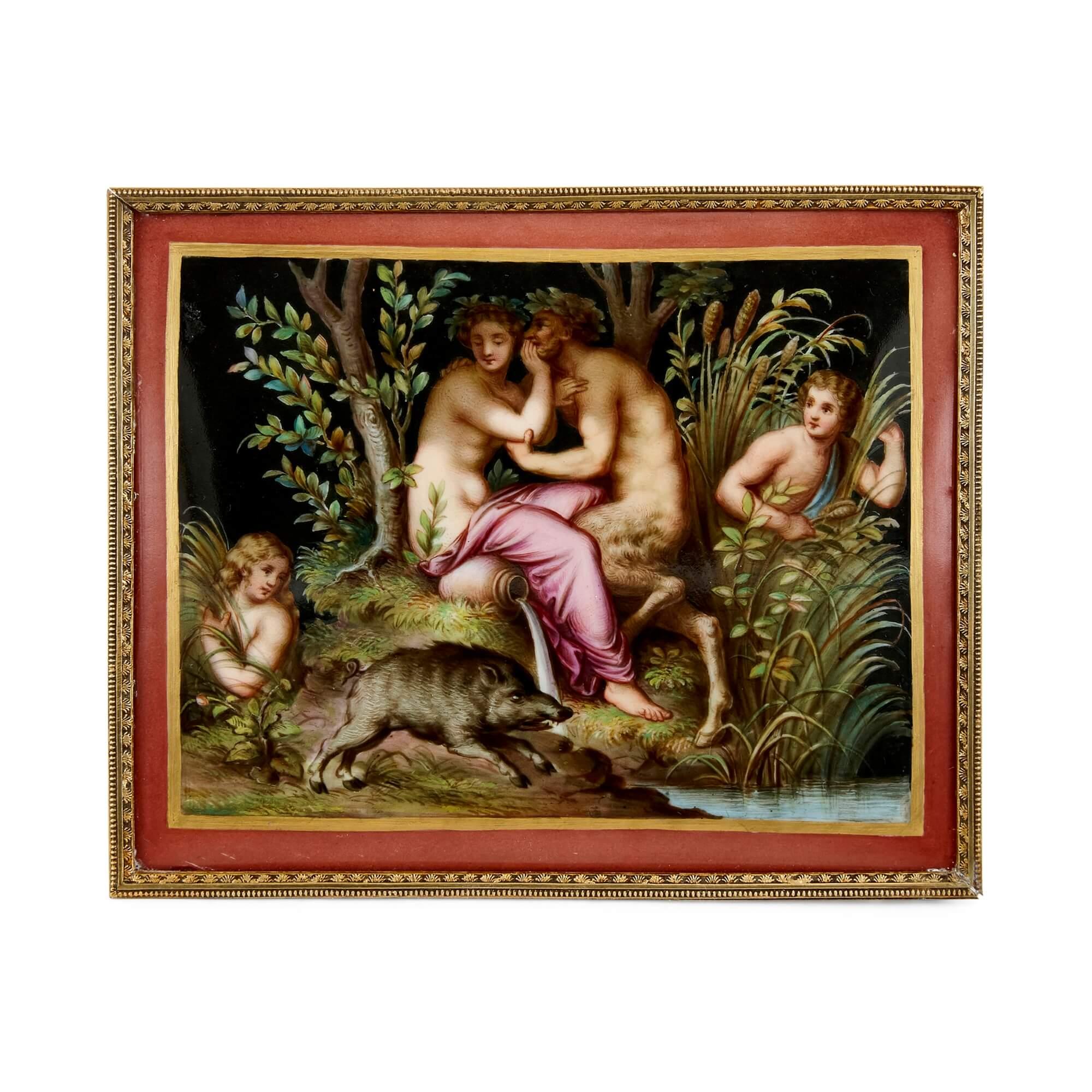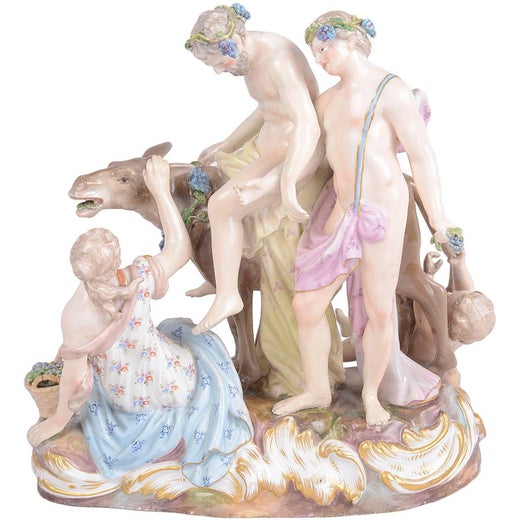19th Century Meissen Porcelain: Empress Catherine ii of Russia's Favorite Dog
About the Item
- Creator:Meissen Porcelain (Manufacturer)
- Dimensions:Height: 6 in (15.24 cm)Width: 17 in (43.18 cm)Depth: 10 in (25.4 cm)
- Style:Louis XVI (In the Style Of)
- Materials and Techniques:
- Place of Origin:
- Period:
- Date of Manufacture:1860
- Condition:Wear consistent with age and use.
- Seller Location:New York, NY
- Reference Number:1stDibs: LU919531704552
Meissen Porcelain
Meissen Porcelain (Staatliche Porzellan-Manufaktur Meissen) is one of the preeminent porcelain factories in Europe and was the first to produce true porcelain outside of Asia. It was established in 1710 under the auspices of King Augustus II “the Strong” of Saxony-Poland (1670–1733), a keen collector of Asian ceramics, particularly Ming porcelain.
In pursuing his passion, which he termed his “maladie de porcelaine,” Augustus spent vast sums, amassing some 20,000 pieces of Japanese and Chinese ceramics. These, along with examples of early Meissen, comprise the Porzellansammlung, or porcelain collection, of the Zwinger Palace, in Dresden.
The king was determined, however, to free the European market from its dependence on Asian imports and to give European artisans the freedom to create their own porcelain designs. To this end, he charged the scientist Ehrenfried Walther von Tschirnhaus and aspiring alchemist Johann Friedrich Böttger with the task of using local materials to produce true, hard-paste porcelain (as opposed to the soft-paste variety European ceramists in the Netherlands, Germany, France, Italy and Spain had been producing since the late Renaissance). In 1709, the pair succeeded in doing just that, employing kaolin, or “china clay.” A year later, the Meissen factory was born.
In its first decades, Meissen mostly looked to Asian models, producing wares based on Japanese Kakiemon ceramics and pieces with Chinese-inflected decorations called chinoiserie. During the 1720s its painters drew inspiration from the works of Watteau, and the scenes of courtly life, fruits and flowers that adorned fashionable textiles and wallpaper. It was in this period that Meissen introduced its famous cobalt-blue crossed swords logo — derived from the arms of the Elector of Saxony as Arch-Marshal of the Holy Roman Empire — to distinguish its products from those of competing factories that were beginning to spring up around Europe.
By the 1730s, Meissen’s modelers and decorators had mastered the style of Asian ceramics, and Augustus encouraged them to develop a new, original aesthetic. The factory’s director, Count Heinrich von Brühl, used Johann Wilhelm Weinmann’s botanical drawings as the basis for a new line of wares with European-style surface decoration. The Blue Onion pattern (Zwiebelmuster), first produced in 1739, melded Asian and European influences, closely following patterns used in Chinese underglaze-blue porcelain, but replacing exotic flora and fruits with Western varieties (likely peaches and pomegranates, not onions) along with peonies and asters.
During the same period, head modeler Joachim Kändler (1706–75) began crafting delicate porcelain figures derived from the Italian commedia dell’arte. Often used as centerpieces on banquet tables and decorated to reflect the latest fashions in courtly dress for men and women, these figurines were popular in their day, and are still considered among Meissen’s most iconic creations. Kändler also created the Swan Service, which, with its complex low-relief surface design and minimal decoration is considered a masterpiece of Baroque ceramics.
The rise of Neoclassicism in the latter half of the 18th century forced Meissen to change artistic direction and begin producing monumental vases, clocks, chandeliers and candelabra. In the 20th century, Meissen added to its 18th-century repertoire decidedly modern designs, including ones in the Art Nouveau style. The 1920s saw the introduction of numerous animal figures, such as the popular sea otter (Fischotter), which graced an East German postage stamp in the 1960s. Starting in 1933, artistic freedom was limited at the factory under the Nazi regime, and after World War II, when the region became part of East Germany, it struggled to reconcile its elite past with the values of the Communist government. In 1969, however, new artistic director Karl Petermann reintroduced the early designs and fostered a new degree of artistic license. Meissen became one of the few companies to prosper in East Germany.
Owned by the State of Saxony since reunification, in 1990, Meissen continues to produce its classic designs together with new ones developed collaboratively with artists from all over the world. In addition, through its artCAMPUS program, the factory has invited distinguished ceramic artists, such as Chris Antemann and Arlene Shechet, to work in its studios in collaboration with its skilled modelers and painters. The resulting works of contemporary sculpture are inspired by Meissen’s rich and complex legacy.
Find a collection of authentic Meissen Porcelain on 1stDibs.
- ShippingRetrieving quote...Ships From: New York, NY
- Return PolicyA return for this item may be initiated within 1 day of delivery.
- A 19th Century Meissen Porcelain 'Elements' Ewer Emblematic of AirBy Meissen PorcelainLocated in New York, NYA 19th century Meissen porcelain 'Elements' ewer emblematic of air. Blue crossed swords mark. The present ewer, representing water, i...Category
Antique 1880s German Rococo Vases
MaterialsPorcelain
- 19th Century Meissen Porcelain 'Elements' Ewer Emblematic of WaterBy Meissen PorcelainLocated in New York, NYA 19th century Meissen porcelain 'Elements' ewer emblematic of water. Blue crossed swords mark. The present ewer, representing water,...Category
Antique 1870s German Rococo Vases
MaterialsPorcelain
- 19th Century Meissen Porcelain Figure of a Malabar Man on a RhinocerosBy Meissen PorcelainLocated in New York, NYA fantastic 19th century Meissen Porcelain orientalist/Turkish figure of a Malabar Man seated on a rhinoceros. This is a rare and beautiful group made by...Category
Antique 19th Century German Chinoiserie Animal Sculptures
MaterialsPorcelain
- Pair of 19th Century Meissen Porcelain Cupid Centerpieces with BasketsBy Meissen PorcelainLocated in New York, NYPair of 19th century Meissen Porcelain compote centerpieces with cupids running after each other around a tree with filigree baskets on top with raised...Category
Antique 19th Century German Centerpieces
MaterialsPorcelain
- Incredible 19th Century Meissen Porcelain Covered Urn Emblematic of AutumnBy Meissen PorcelainLocated in New York, NYAn incredible and truly monumental 19th century Meissen Porcelain Covered urn emblematic of autumn. This is one of the most incredible and sp...Category
Antique 1880s German Rococo Urns
MaterialsPorcelain
- 19th C. Meissen Porcelain Figure of a Sultana Riding an Elephant with a CrownBy Meissen PorcelainLocated in New York, NYAn Elaborate 19th century Meissen Porcelain Figure of a Sultana Riding an Elephant. After the model by P.J. Reinicke and J.J. Kändler, the Sultana sitting on the elephants back and h...Category
Antique 1860s German Louis XVI Animal Sculptures
MaterialsPorcelain
- Porcelain Easter Egg, Russia End of 19th CenturyLocated in Milan, ITA painted porcelain Easter egg, depicting dahlia flowers on one side, while the cyrillic inscription: Risen Christ on the other side, on a white backgroun...Category
Antique 1890s Russian Porcelain
MaterialsPorcelain
- 19th Century Meissen Porcelain ParrotBy Meissen PorcelainLocated in Dublin 8, IE19th Century Meissen porcelain parrot with brightly coloured plumage naturalistically modelled and perched on a tree-stump applied with leaves and flowers. In 1731 the Meissen manuf...Category
Antique 19th Century English Porcelain
MaterialsPorcelain
- 19th Century Germany Meissen Porcelain GroupingBy Meissen PorcelainLocated in Los Angeles, CA19th century Germany Meissen porcelain grouping.Category
Antique 19th Century German Porcelain
MaterialsPorcelain
- Meissen Group 'Allegory Of The Volga' for Catherine II of Russia, Kaendler, 1850By Meissen Porcelain, Johann Joachim KaendlerLocated in Vienna, ATVery rare and excellent porcelain sculpture: Kändler created this group in 1772, right at the beginning of the work on the large order, as a personification of one of the two great main rivers of the vast Russian Empire, the natural waterways Volga and Dnieper, important for economy and traffic, which promised prosperity and wealth to the Empire: The Volga in the form of a river god, seated sideways on heavily relieved fully sculptured rock covered with shells and coins as well as fern and reed plants, fully bearded and crowned with laurel, wrapped in floral patterned purple loincloth. He looks pensively to the side and rests his right arm on an overturned baluster vase, from which water flows together with shells and fish, on the wall of the vase the crowned, rocaille-framed Polish-Lithuanian royal coat of arms with the coat of arms of the Electorate of Saxony. At the same time he touches with his hand an oar with gold ornamentation and crossed red swords, in his left he holds a cornucopia with plastic flowers, ears of grain and coins, symbols of fertility and wealth. The group is based on the front curved plinth with relief gold heightened meander and ribbon border. The design of this group belongs to the models of the 'Great Russian Order...Category
Antique Mid-19th Century German Baroque Porcelain
MaterialsPorcelain
- Meissen Group 'Triumph Of Apollo Over Python' for Catherine II of Russia, c 1860By Meissen Porcelain, Johann Joachim KaendlerLocated in Vienna, ATVery rare and excellent porcelain sculpture: Kaendler created the group Apollo and Python as a triangular composition in March and May of1774. Apollo stands in the highest place as the radiant victor over the dragon Python and over the personification of envy, both of whom lie slain at his feet. To the left, Minerva sits as the goddess of prudent war, turning her gaze to the hero. Dressed in helmet and armor, she carries a spear in her right hand and an olive branch in her left, while the owl next to her right foot indicates her identity as Pallas Athena. Just like Apollo, the tsarina protected by Minerva is supposed to leave the envious behind and always triumph over evil. The group is based on stepped, irregular, yet symmetrical, partially curved base with gold raised frieze decoration and was made in two parts, which were then joined and screwed together. The design of this group belongs to the models of the 'Great Russian Order...Category
Antique Mid-19th Century German Baroque Porcelain
MaterialsPorcelain
- 19th Century German Meissen painted porcelain plaqueBy Meissen PorcelainLocated in London, GB19th Century German Meissen painted porcelain plaque German, 19th Century Height 11cm, width 13.5cm, depth 1cm This charming painted porcelain plaque d...Category
Antique 19th Century German Neoclassical Paintings
MaterialsMetal
